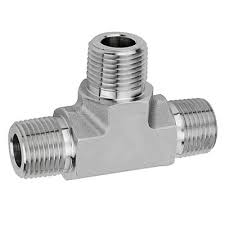
Stainless steel pipe fittings are widely used in various industries due to their durability and resistance to corrosion. Installing these fittings in a safe and efficient manner is crucial to ensure the integrity and reliability of the entire piping system. In this article, we will discuss the steps involved in installing stainless steel pipe fittings safely and efficiently.
Step 1: Prepare the Work Area
Before starting the installation process, ensure that the work area is clean, dry, and well-ventilated. Remove any debris, oil, or grease from the surface where the fittings will be installed. Also, make sure that the tools and equipment needed for the installation process are readily available.
Step 2: Measure and Cut the Pipes
Measure the length of the pipes and cut them to the required size using a pipe cutter or hacksaw. Ensure that the cuts are clean and straight to avoid any leaks or damage to the fittings.
Step 3: Clean the Pipes and Fittings
Clean the pipes and fittings thoroughly using a degreaser and a clean cloth. This will remove any dirt, oil, or grease from the surfaces and ensure a secure fit between the pipes and fittings.
Step 4: Apply Thread Sealant
Apply a thread sealant to the male threads of the fittings. This will help to prevent leaks and ensure a tight seal between the pipes and fittings.
Step 5: Install the Fittings
Install the fittings onto the pipe, making sure they are properly aligned. Use a wrench to tighten the fitting securely, but avoid overtightening, which can damage the threads or cause a leak.
Step 6: Test the System
After installation, test the system for leaks by running water or air through the pipes. Check all fittings and connections for any signs of leaks. If there are any leaks, tighten the fittings further or replace them if necessary.
In my mind, installing stainless steel pipe fittings safely and efficiently requires careful preparation, clean surfaces, and the use of proper tools and equipment. By following these steps, you can ensure a secure and reliable piping system that will last for years to come.

